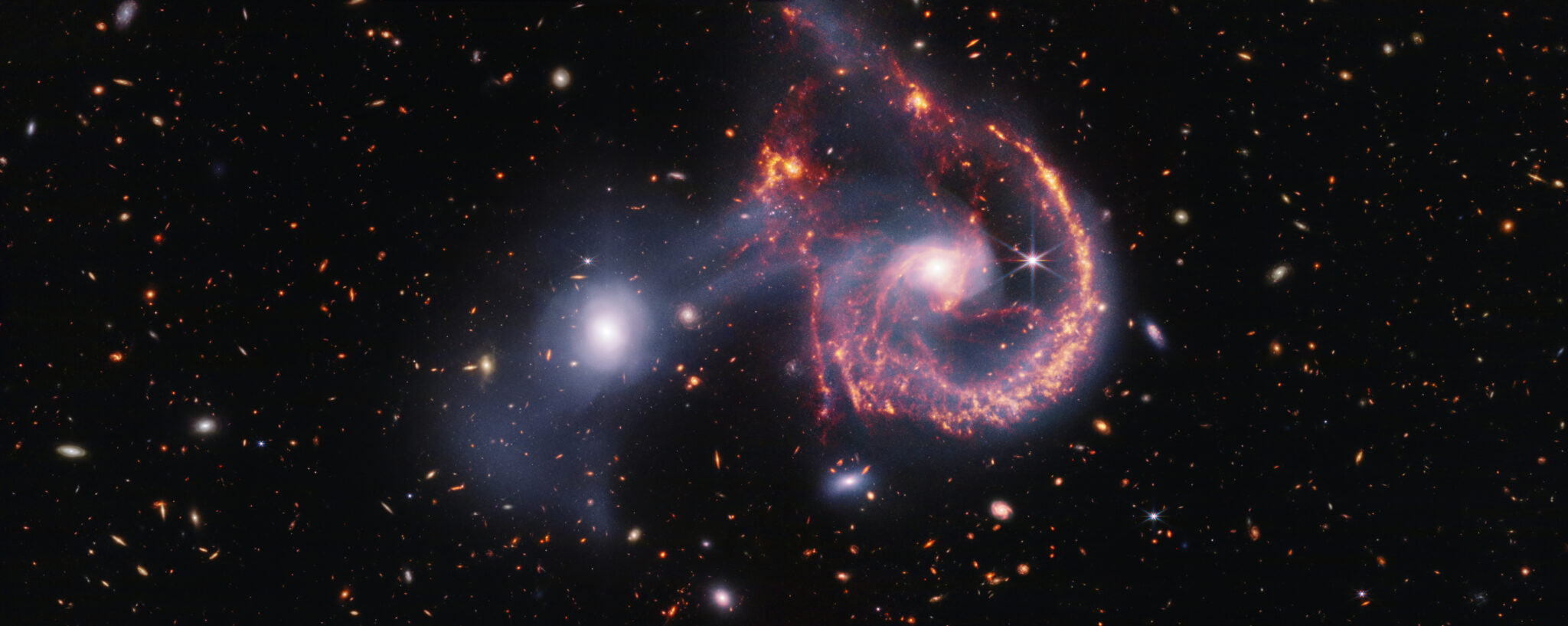The James Webb Space Telescope has detected the collision of two galaxies Arp 107, 465 million light-years away from Earth. Gravitational interaction gives galaxies strange shapes. But this process only seems destructive as new stars are born in clouds of dust and gas.

This image is a combination of data from two James Webb instruments: NIRCam (near-infrared camera) and MIRI (mid-infrared instrument). The white colors in the photo reflect near-infrared data highlighting old stars and the gas band between galaxies. The orange and red hues show active star formation regions where young stars emit energy.
MIRI data also show a bright glow around a supermassive black hole in one of the galaxies. Although the black hole is not directly visible, its surroundings are heated by the interaction with dust and gas, creating this light.
The image is reminiscent of the Cartwheel Galaxy, also known for its active interactions. Such collisions can change the shape of galaxies and affect the rate of star formation. As Webb’s scientists point out, these events compress the gas, which favors the birth of new stars. At the same time, some collisions disperse gas, which may prevent star formation.
The Arp 107 galaxies will merge for hundreds of millions more years, eventually forming a single galaxy.
Earlier we reported on how James Webb celebrated two years of observation with a photo of The Penguin and the Egg.
According to ESA


